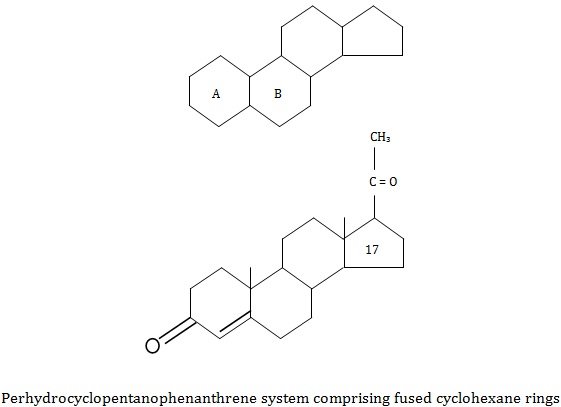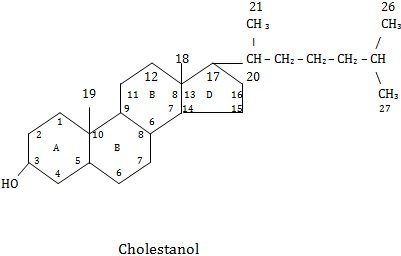Steroids
Steroids Assignment Help | Steroids Homework Help
Steroids
Steroids form a group of compounds which are structurally and functionally unrelated to lipids but resemble terpenes to an extent. They are soluble in organic fat solvent but cannot be hydrolyzed by NaOH, hence they represent the unsaponifiable fraction. These are the most studied compounds, some of which function as hormones of immense biological importance.
The basic structure of steroids is derived from the fusion of three cyclohexane rings (A, B, C rings) and one cyclopentane ring (D), commonly known as perhydrocyclopentanophenanthrene ring system.The ring system is fully saturated, though some naturally occurring steroids may have one or more double bonds. Steriods may have one or more double bonds. Steroids have been prepared synthetically also. These differ from the naturally occurring ones in the configurations of carbon joining rings A and B.

A typical compound belonging to the group of steroids is cholestanol, in which each ring is saturated, and their conformational form can be represented in cis or trans structures. Steroids are physiologically important since some of them function as bile acids, sex hormones, and adrenocorticoid hormones.
Steroids containing an alcoholic group at C-3 position and a side chain of 8 to 10 carbons at C-17 are called sterols. The best known examples, that are widely distributed in animal and plant tissues are cholesterol and ergosterol respectively. Cholesterol is most abundant in brain, nervous ester bonds, and in this form it exists freely in the tissues Ergosterol is found in yeasts, moulds, and is a precursor for vitamin D.



For more help in Steroids click the button below to submit your homework assignment